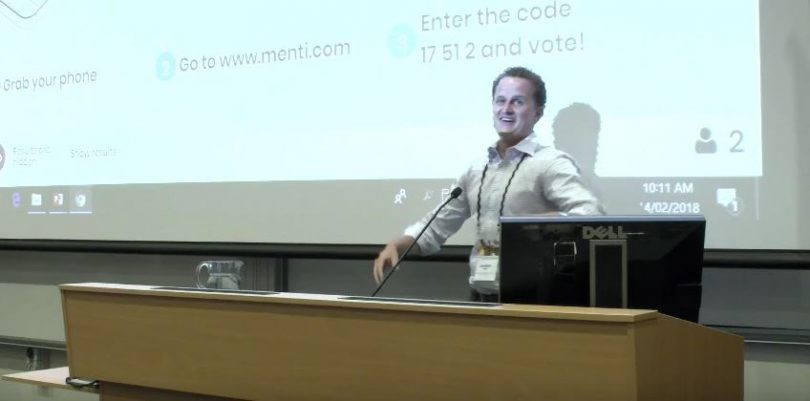I wanted to start this pitch with a joke, but the state of Australian aid is no laughing matter. You know the story. A 30% cut to the budget, the hostile takeover of AusAID by DFAT and subsequent attrition of staff. Every poll I have seen shows there is tenuous public support for aid – people like it, but don’t think too much about it. They think we spend too much, but also think our aid spend is much larger than it really is. But no one outside of the Australasian Aid Conference actually votes on it.
There isn’t even tenuous support for the aid program in our foreign policy community. The aid program makes up about two-thirds of DFAT’s operating budget, but it is still seen as an inconvenience that needs to be “managed”, rather than an effective foreign policy tool. To illustrate this point, Australian aid got about as much mention in the recent Foreign Policy White Paper as Antarctica (see pages 85 and 90) – an uninhabited continent!
This all starts at the political level, where we have completely lost bipartisan support for scaling up the aid program. Research presented at the conference by Ben Day and Jo Spratt shows how critical political champions are for aid programs, just look at David Cameron in the UK.
Whatever aid advocacy we have been engaged in to date has clearly failed.
So, what do we do differently? We have relied for far too long on amateur and disparate advocacy efforts that focus too much on the public and not enough on the political elite. Oaktree, the churches, an unwieldy NGO community with conflicting priorities, the Campaign for Australian Aid.
It’s time to professionalise aid advocacy. What we need is an aid lobbyist. A group that knows where power lies in Parliament, how to access it, and how to tailor a personal narrative on why the aid program is important, with every MP and power-broker they meet. Let’s hire the team the Minerals Council use, they know how to get stuff done.
This sort of lobbying would be complemented well by enhancing the work that the Gates Foundation is currently funding through Save the Children on Parliamentary study tours, taking MPs to see Australian aid in action first-hand. Every MP I’ve talked to that has been on one of these trips, even if they still don’t believe in the overall aid program, will tell you how important the projects they visited were. Get them to enough projects, and into enough communities that we are helping, and their thinking about the broader aid program surely has to start to change.
The question I’m sure you’re all asking is, well, that sounds great Jonathan, but how do you pay for it? We all want to see an aid program of 0.5% of Australia’s national income. Well, let’s put our money where our mouths are. If the private sector, universities, and NGOs took 0.5% of the income they earned from implementing the aid program in 2015/16 (a total of $1.7bn according to the DFAT Green Book) and invested it into an independent aid lobbyist, we’d have $9 million. That’s a damn good start.
The private sector could take the first step. In 2015-16, the year the cuts fully hit, your funding actually increased by 13%. You now implement just under a quarter of the Australian aid program, and you make a profit. There’s also only ten of you managing 98% of that, many of which have recently been bought out by global entities that are surely well-versed in how lobbying works. It’s time to step up.
I can already hear all the sectors grumbling. I get it, you’re all hard done by and resources are stretched incredibly thin. You just can’t afford it. But ask yourself this, can the aid program afford to have no investment in advocating for its future? Recent history says no.
This pitch was originally presented as part of the 3-Minute Aid Pitch (3MAP) at the 2018 Australasian Aid Conference. Watch the video here.



Advocacy is nice from an Aus point of view but on the ground where I am in the Solomons, the Australian foreign aid agenda has a poor reputation of suiting Australia more than Solomons (boomerang aid). From some of the programs I interact with, the impact is low and the overheads are high – more money on consultant salaries and other expenses than on partnerships. Not with all cases. Putting more money into a bad model doesn’t have my support.
Better advocacy is just putting lipstick on the pig. Fix the real issues.
I strongly endorse this. I would contribute 0.5% of the funding I received. The mining industry was able to do so much (damage) with their $20m televised advocacy program a few years ago. We could do quite a bit (of good) with $9m!
Foreign aid seems to be a matter that the public is broadly indifferent, neither strongly supportive, nor strongly opposed. It is therefore up to government to lead the way, and not feel constrained by public opinion.
There is a role for leadership and moral reflection about what goals and commitments are valuable, whether valued intrinsically or valued instrumentally. Both types of value are relevant.